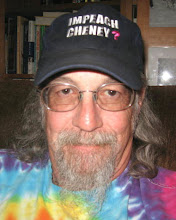Also in Environment
The Obamas Kick Off a Victory Garden Movement -- Who Will Join Them?
Kerry Trueman
Just What Is a "Green Job" Anyway?
Christopher Weber
EPA Halts Mountaintop Removal Permits
Jeff Biggers
A Crisis Is a Terrible Thing to Waste
Kevin Danaher, Alisa Gravitz
The Exxon Valdez Oil Spill: On Its 20th Anniversary, We Can't Let Corporate Media Tell the Story
Meg White
Ed. Note: Don't miss BuzzFlash's interview with Riki Ott on the 20th Anniversary of the Exxon Valdez spill.
March 24, 1989
Cordova, Alaska
The loud, urgent banging on my door early on the morning of March 24, 1989, signaled an emergency. I raced downstairs and flung open the door to find a fisherman bearing news of "the big one." The Exxon Valdez was aground in Prince William Sound and had already spilled at least 11 million gallons of crude oil.
The Big One was the stuff of nightmares in Cordova, a fishing town that thrived on the bounty of the sea. Within the hour, I was flying out over the sound with instructions to report back to the waiting fishermen.
The low angle of the rising sun tinged the snow-covered mountains a soft pink. Down on the calm water lay the blood-red tanker sitting in an inky black stain. A bluish fog of toxic oil vapors swirled at the sea surface. The promised oil-spill-response equipment was nowhere in sight.
Stopping in the tanker port of Valdez to refuel, I stepped out on the tarmac to try to process my feelings of grief, anger, shock and horror. A question popped into my mind: I know enough to make a difference. Do I care enough?
I saw how my life had stacked up to be in this place at this time with knowledge that was needed -- before falling in love with Cordova and becoming a commercial fisher, I had earned master's and doctorate degrees in marine pollution. I decided I did care about my adopted hometown. That single act of commitment is still what drives my work to this day, 20 years later.
The Exxon Valdez oil spill was, and remains, the biggest spill in the history of the United States. Somewhere between 11 million and 38 million gallons of crude oil flooded the environment, blackening 3,200 miles of coastline. Imagine the East coast with slick oil stretched from New York to Cape Canaveral, Fla. The spill killed more wildlife than any other spill to this day, but the killing did not stop in 1989.
Roughly half of the spilled oil stranded and was buried on the beaches of Prince William Sound, according to scientists with the National Oceanographic and Atmospheric Administration. In 2003, the NOAA scientists mapped the buried oil and reported 21,000 gallons of toxic crude oil are still there -- and they say it will remain there, possibly, for centuries more.
The latest studies in 2007 show the buried oil is still entering the food web as predators such as harlequin ducks and sea otters forage on oil-contaminated shellfish. Two-thirds of the species injured by the spill and selected for study have not fully recovered, according to federal and state officials charged with restoration studies. This includes species like herring, the basic forage fish of the ecosystem. The remaining population of herring is now miniscule, barely sustaining the ecosystem -- and the once highly lucrative herring fisheries are closed indefinitely.
Exxon's oil spill pushed the vibrant, thriving fishing town of Cordova -- once ranked among the top 10 seaports in the nation -- into a dark depression. For many fishermen and spill survivors, the debt on their assets (fishing permits) exceeds the value. Herring fishermen, for example, owe a mountain of debt on devalued permits, and, with no revenue from fisheries to support annual permit payments, many face bankruptcy.
Years of financial uncertainty stemming from collapsed fisheries, oiled beaches and mounting debt have plagued Cordova. There were spikes in domestic violence, substance abuse, divorce and suicide for years after the spill, and the litigation over spill losses contributed to the anxiety and dysfunction.
For the past 20 years, it hasn’t been the state or federal government, the legal system or lawyers -- and certainly not ExxonMobil -- that has helped rebuild Cordova. It has been the residents themselves.
We now have mostly double-hull tankers, a state-of-the-art vessel traffic control system, tractor tugs that can push or pull in 360 degrees, and disabled-tanker towing packages that have been proved to work with supertankers. Citizen advocacy groups pushed each of these improvements against strong objections from the industry.
In my travels of the last three years, I witnessed people all over America of all ages taking action to reduce our oil dependency and build self-reliant communities with regional food, energy and banking. It’s the same "can do" attitude that rebuilt Cordova -- and that built our country.
If we want to transition off oil, the change starts with us. It’s about focusing on what we have in common: a very basic human desire to pass a livable planet on to future generations. It’s about setting aside our differences so that we can work together to achieve that goal. Just ask the people of Prince William Sound.
See more stories tagged with: oil spill, exxon valdez, marine life
Riki Ott is a marine toxicologist and the author of Not One Drop: Betrayal and Courage in the Wake of the Exxon Valdez Oil Spill (Chelsea Green, 2008). Ott is a former commercial salmon "fisherma'am" and now a full-time community activist.

































No comments:
Post a Comment